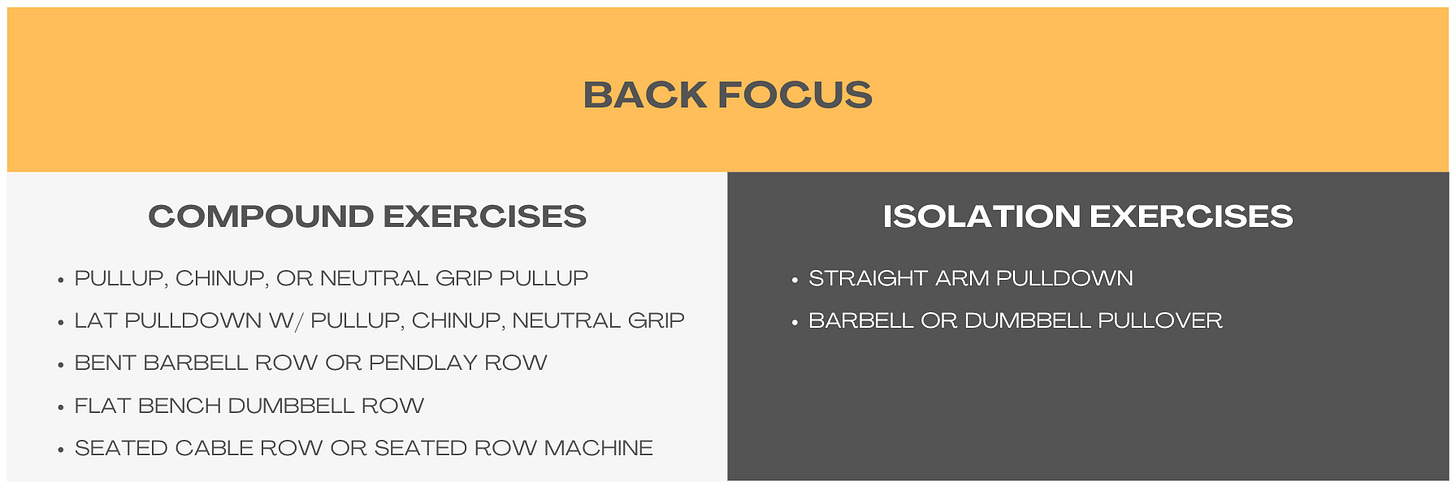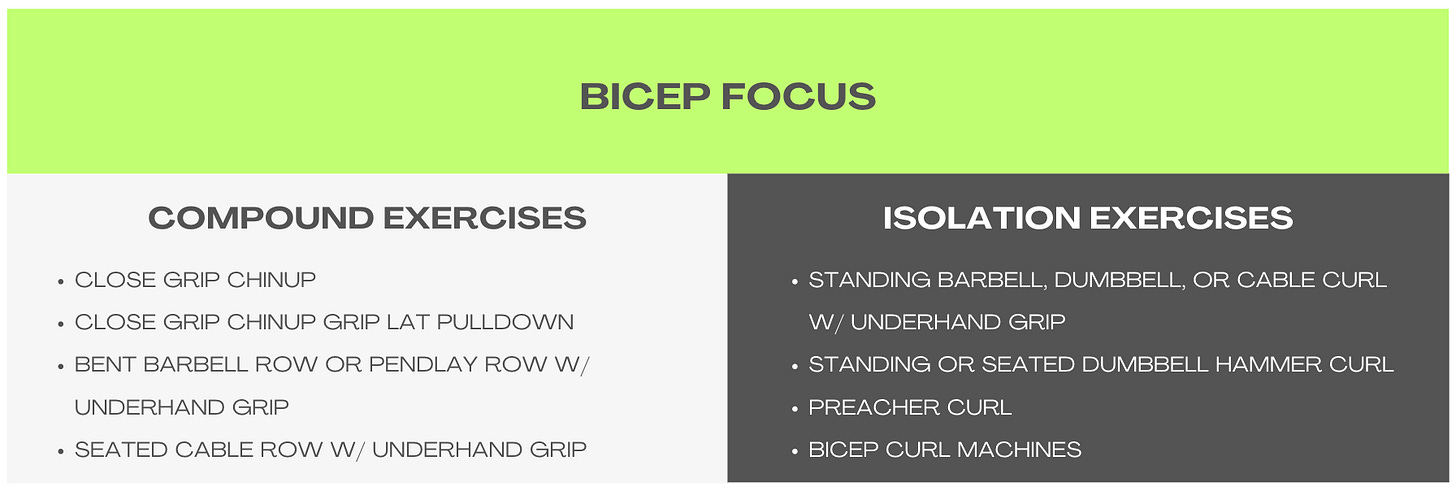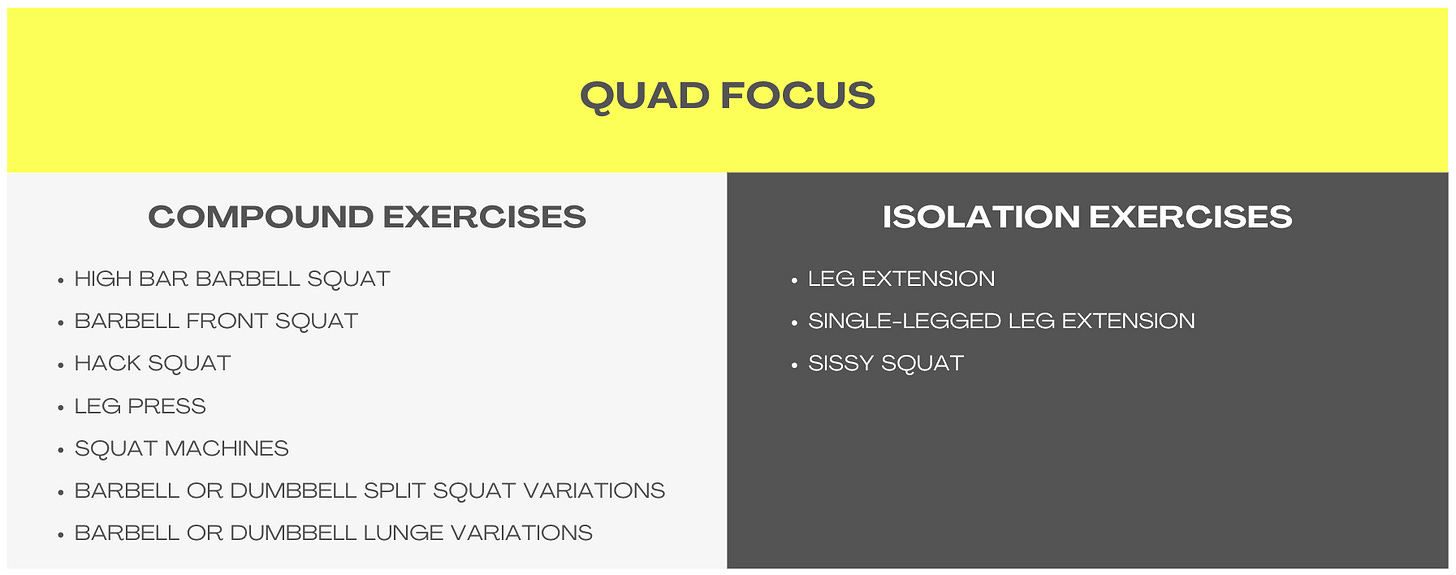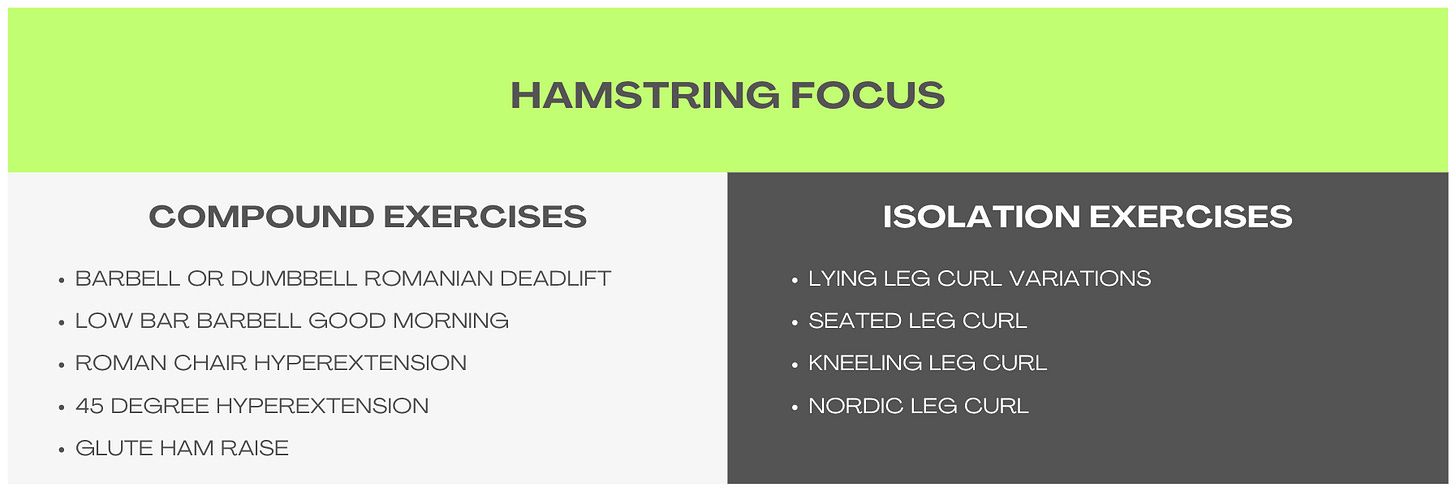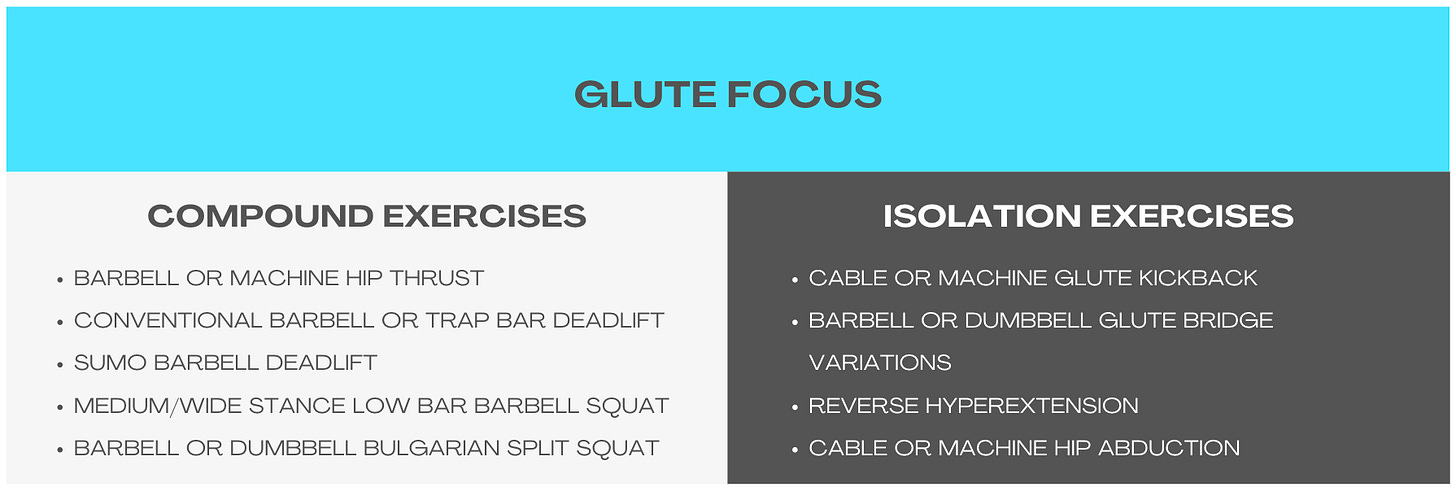These Exercises Guarantee Progress
Pick your exercises like a pro and waste no time in the gym.
A strong program must have strong foundations. Can you really have one without the other? I don't think you can. This article is one of several that make up my Bedrock Principles series. This series discusses foundational principles of professional program design and was created to help you train smarter and get more out of every minute you dedicate to the gym.
Reading this series will provide you with:
A checklist of must-have principles to include in your training program for maximum muscle and strength results. I want you to get the most out of every rep you complete by training hard, but also smart.
A ‘Layman’s Terms’ education on why these principles are so important. I believe in following both science and anecdotal evidence, but also believe in relaying information in simple and relatable terms.
Examples of how to implement each Bedrock Principle. I want you to be able to read each article in this series and get right into the gym to implement what you’ve just learned.
What's the old saying about giving a man something versus teaching a man something? Oh ya...
Give a man a workout and you’ll feed his muscles for a day. Teach a man to train and you’ll feed his muscles for life.
In my opinion, you knowing the 'why' behind anything you do is much more valuable than just being told to do it. This article is me teaching you how to train.
The First Bedrock Principle
On that note, it's time to discuss some foundational principles of professional-grade training program design. I said foundational principles, but I'm going to call them Bedrock Principles from here on out. Honestly, I just think bedrock sounds cooler and it makes me think of The Flintstones…and Fred Flintstone powered his car with his own strength…so that's that.
Our first principle is Max Stimulus Exercise Selection. Every training program I design consists of multiple weight training days and my most effective program makes sure to work all of the body’s major muscle groups.
FYI, here’s the program I’m talking about:
Back to business. In order to make sure each major muscle group is trained, each training day is based around one or more natural human movements.
As humans, we are designed to do physical work, but we are also lucky enough to possess powerful brains, giving us the ability do our work in a smart manner.
As I mentioned earlier, training hard is crucial, but training smart is just as important.
As a human, your upper body can press objects away from or pull objects toward itself. Your lower body allows you to lift objects off of the ground or stand up with a load applied to your upper body. The standard examples of each of these four situations, in the same respective order are:
Barbell Bench Press
Barbell Row
Barbell Deadlift
Barbell Squat
Of course, there are exercise variations which target the muscle groups involved in each of these four main actions to varying degrees. For example, the Incline Dumbbell Press and Pec Deck machine both work pressing muscles. The Dumbbell Press activates the pecs, shoulders, and triceps, while the Pec Deck isolates the pecs.
An example pertaining to the lower body would be the Walking Lunge versus the Leg Extension. The Walking Lunge activates the quads, glutes, hamstrings, and calves, while the Leg Extension focuses solely on the quads. Both exercises are working muscles used during a Squat, but neither are actually a Squat.
For your training program to be effective and efficient for balanced full body muscle and strength gains, it needs to be focused first on working and strengthening the movements you're designed for. Exercise selection is so important and this is exactly why it’s a Bedrock Principle.
To build a size and strength-focused professional-grade program, you must employ multiple proven methods aimed at size and strength gains. As we’re focused on exercise selection in this article, your decisions need to have thought behind them. Your decisions need to be calculated and you need ensure success by choosing superior exercises; the apex predators of the exercise kingdom.
Exercise Types: Compound Versus Isolation
At their base classification, exercises can be broken into two categories and each category is able to fulfill certain needs. These categories are:
Compound Exercises
Isolation Exercises
Compound exercises are the most popular; think Squats, Deadlifts, Bench Presses, Overhead Presses, and Rows. These exercises provide huge benefits in size and strength and they do it efficiently. They require multiple muscle groups to complete each rep.
Compound Exercise: A multi-joint exercise that works multiple muscle groups at the same time.
Isolation exercises are also popular, but they’re generally stuck in the shadows of the big boys, typically being performed second in line during an effective training day. Isolation exercises activate fewer muscles than compound exercises, as they only target one muscle group at a time. However, this makes them a logical choice when wanting to hit a single muscle group for added volume and growth, as well as making sure no stone is unturned in your program.
As an example, if you wanted to ensure biceps focus, would you do extra compound rowing exercises or curling exercises? The curling exercises precisely target the biceps and use less total energy to do it. They’re the obvious choice in that particular situation. Isolation exercises may take a backseat to compounds in the training day hierarchy, but they certainly shouldn’t be excluded.
Isolation Exercise: An exercise that targets a single muscle group and involves the movement of a single joint.
Now that you’re familiar with these two different exercise classifications, it seems to me that providing you with lists of my recommended compound and isolation exercises for each muscle group is the next logical step. Let’s go there.
Upper Body Muscle Groups
Lower Body Muscle Groups
The lists above contain many exercises per muscle group, but don’t worry, you’re not expected to use all of these exercises at the same time. In fact, never ever do that! It’d be overkill.
Designing a quality training program involves picking out the exercises which fulfill your needs and help you move closer to your goals.
I’ve put together a checklist of items to consider when choosing your exercises and would like to go over each of the four items below.
The Exercise Targets the Muscle(s) You’re Wanting To Work
This checklist item is a no-brainer when it comes to exercise selection. Regardless of the type of program you’re running, the exercises you choose to construct each training day must target the muscles you’re intending to work.
While this is a common sense type of guideline, I know that the average person does not automatically understand which exercises work which muscle groups. People don’t instinctually know this information, which is why I made sure to break down my previous exercise lists by muscle group.
If you’re a person who hasn’t learned the ins and outs of exercises and their targeted muscle groups, my lists will be extremely helpful to you.
For example, if your training split calls for a chest and tricep day, you will be able to look at my lists, choose exercises under those muscle groups, and know you will be targeting the muscles you’re wanting to work and making correct choices.
The Exercise is One You’re Confident in Performing Properly
I came up with this guideline with injury prevention in mind. Injuries are one of the most defeating situations in the training game. You can be locked in the training zone, knocking out workout after successful workout, making progress every day, and all of the sudden an injury can put a halt to everything.
There are actions a person can take in the gym to reduce their chance of injury and there are also actions that increase the chance of injury.
One way to increase your chance of injury is to intensely train an exercise with improper form and a lack of confidence.
Form matters so much, especially when using challenging weight. This is exactly why this guideline is important and is part of my relatively short list. Proper form is the key to targeting intended muscle groups correctly and with precision. When the body moves correctly during an exercise, the intended working muscle groups are forced to activate. There’s just no way around it.
Correct form also reduces risky mistakes, such as swinging the body, rocking for momentum, and just generally cheating the weight up any way you can. Our brains want us to move the weight from point A to point B, even if it involves breaking proper form. We can’t just rely on our natural instincts when it comes to moving weight. We need to learn the correct movement patterns of exercises first, then apply weight to the exercises once we’re ready.
Practice exercises you’re curious about with light weights and save the intense work for those you’re familiar with.
The bottom line is that if we’re not experienced with and confident in our ability to perform an exercise, it should not be trained intensely.
The Exercise is Mentally Engaging and Enjoyable For You
This is another very important guideline to consider when making your exercise selections. Let me ask you this; if two people undertake the same activity and one enjoys it and finds it mentally engaging, while the other finds it miserable and boring, which person do you see continuing the activity? Who will be more successful in that activity? Obviously the person who is engaged by, and enjoying what they’re doing, will continue on and be more successful as a result.
The reality is that if you enjoy and are mentally engaged by the majority of your training program, you’ll be more successful in the gym.
If you noticed in the sentence above, I made sure to use the word ‘majority.’ I did this because every single exercise and aspect of a training program can’t be right up your alley. There are going to be exercises that you know are great for you, and should be included in your program, but you may not love them.
While this guideline states that your exercises should be enjoyable, please understand that, from time to time, there will be exceptions in the name of necessity. Sometimes you just gotta do what you gotta do to get the job done.
The Exercise is the Correct Type for Its Program Position
This guideline focuses on the placement of exercises throughout a program’s training days. My personal preference is to order compound exercises first and isolation exercises second. While this is my preference, there are situations where I’ll place isolations first from time to time. Also, I’m not the only guy out here designing programs for clients and different coaches have different preferences.
Regardless of the ordering in your program, you need to know which exercises fit the criteria and which don’t.
My exercise lists above will help with that and let’s look at an example situation. Imagine you’re following a program and it calls for these five exercise types during its Upper Press Day, in this order:
Compound Chest Exercise
Compound Shoulder Exercise
Compound Tricep Exercise
Isolation Chest Exercise
Isolation Tricep Exercise
Using my lists, you can simply browse the chest, shoulder, and tricep sections, and choose corresponding exercises that pass my exercise selection guideline checklist. As an example, you may have picked these exercises:
Incline Dumbbell Press (Compound Chest)
Standing Barbell Overhead Press (Compound Shoulder)
Dips (Compound Triceps)
Pec Deck Flye (Isolation Chest)
Cable Pressdowns with the Straight Bar Attachment (Isolation Triceps)
Easy, right? That’s my goal.
I want to provide you with understandable information and guides to help you easily put that information to use. I hope I’m doing that throughout this article.
Final Thoughts & Guidance
With the guidance of a program, the exercise lists in this article, and/or the help of a coach you trust, you now have the ability to choose exercises that are effective, logical, have stood the test of time, and have provided results for people for decades.
My lists aren’t exhaustive, meaning there are exercises out there that are excellent choices, which aren’t included in them. I wanted to keep them relatively short for ease of use, but still robust enough to provide variety over months/years of programming.
Let me put it this way, if you simply used the exercises in this article and changed them up from time to time, you would not be disappointed in your long-term results…at all.
There is enough variety to keep you mentally engaged, guaranteed muscle activation throughout your entire body, bountiful big compound movements for multi-muscle group activation, and an abundance of isolation options for zoning in on specific muscle groups of your choosing.
Put my recommended exercises to work in your programming, push yourself in the gym, and watch the fruits of your labor blossom over time! As Luc de Clapiers once said, “The fruit derived from labor is the sweetest of pleasures.”
Thank you for reading my article.
Ryan









